Unlock the Mystery with Marbles! How Speed and Mass Create Energy — A Hands-on Guide to Kinetic Energy and Work
I’m Ken Kuwako, your Science Trainer. Every day is an experiment.
The immense force of a bowling ball spectacularly knocking down pins. The sheer impact when a pitcher’s fastball smashes into the catcher’s mitt with a thwack! Behind these powerful everyday phenomena lies a fascinating scientific secret: the moment an object’s “energy” is transformed into “work.”
In this article, we’re going to expose the true identity of energy by trying a simple experiment using common materials! Ready to join me in uncovering the mystery of how much “work” a moving object is capable of doing?
Embark on an Adventure to Find the True Nature of Energy!
The term “energy” might sound a bit daunting, but its definition in the world of physics is actually quite simple: “Energy is an object’s ability to do work.” In our experiment today, we’ll observe how a rolling ball’s “kinetic energy” pushes a single AA battery (which represents the amount of “work” it does).
The main characters are a ball rolling down a track, an AA battery placed at the end of the track, and our secret weapon for accurately measuring the ball’s speed: the “Be-Spee.”
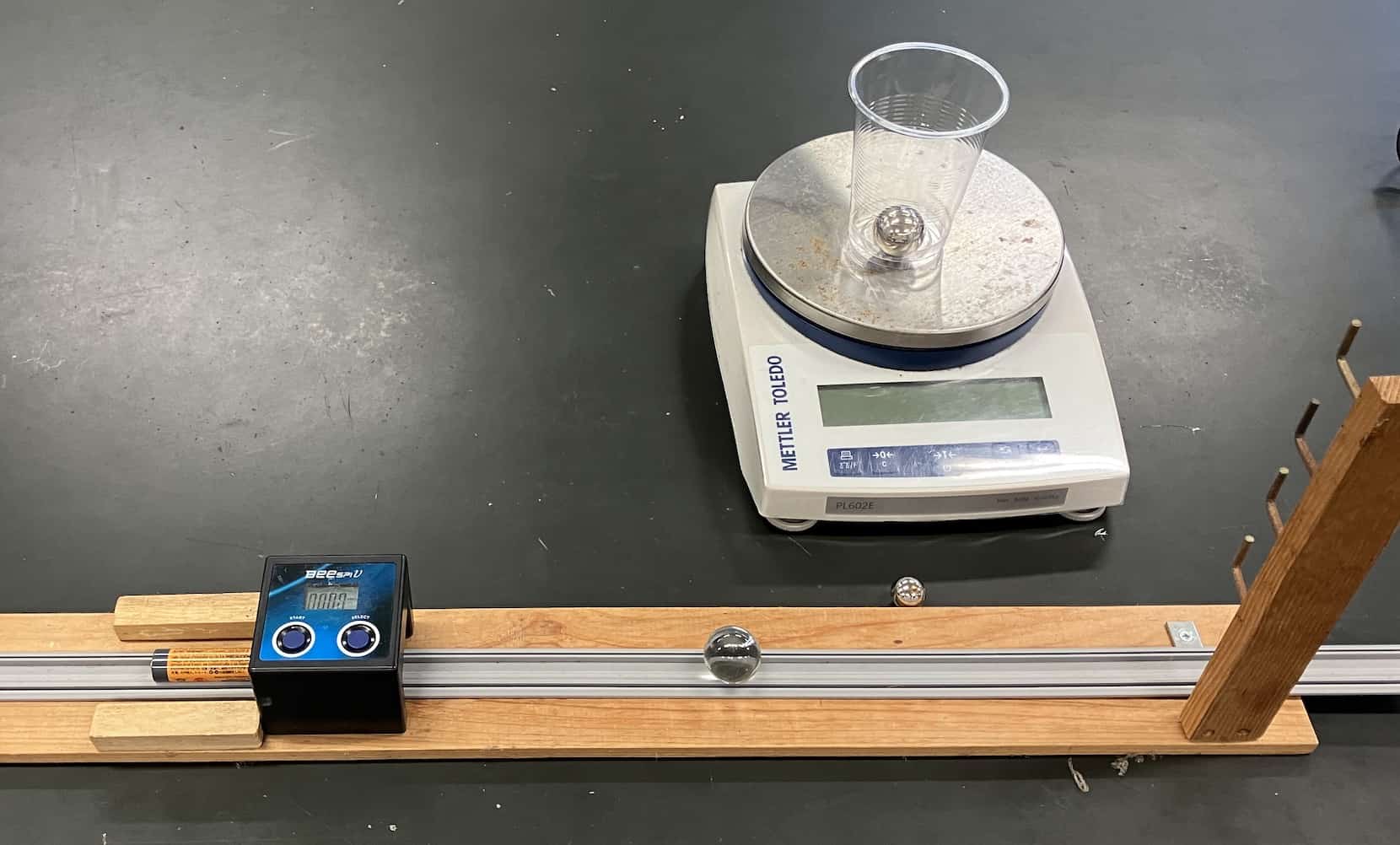
This “Be-Spee” is a fantastic gadget that instantly measures the speed of any object passing through it. It’s a key piece of equipment for many experiments, making it a must-have item for any science enthusiast.

Be-Spee V
For the experiment, we intentionally use several balls with different masses, such as glass marbles, steel balls, and brass spheres, and let students choose which ones they want to test. The mission is to roll the ball down the track to hit the AA battery, then record the “ball’s speed” and the “distance the battery moved.” What kind of results do you think we’ll find?
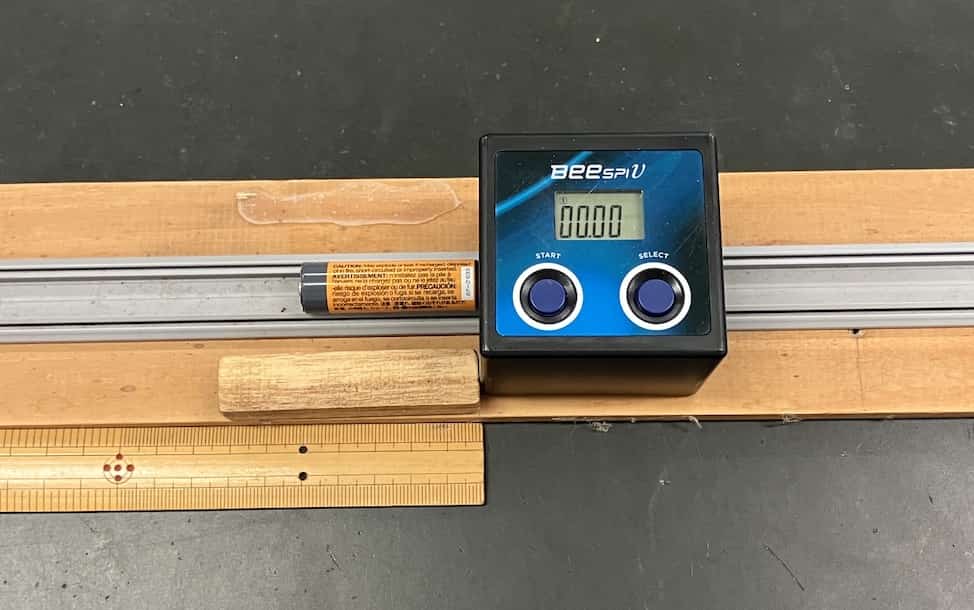
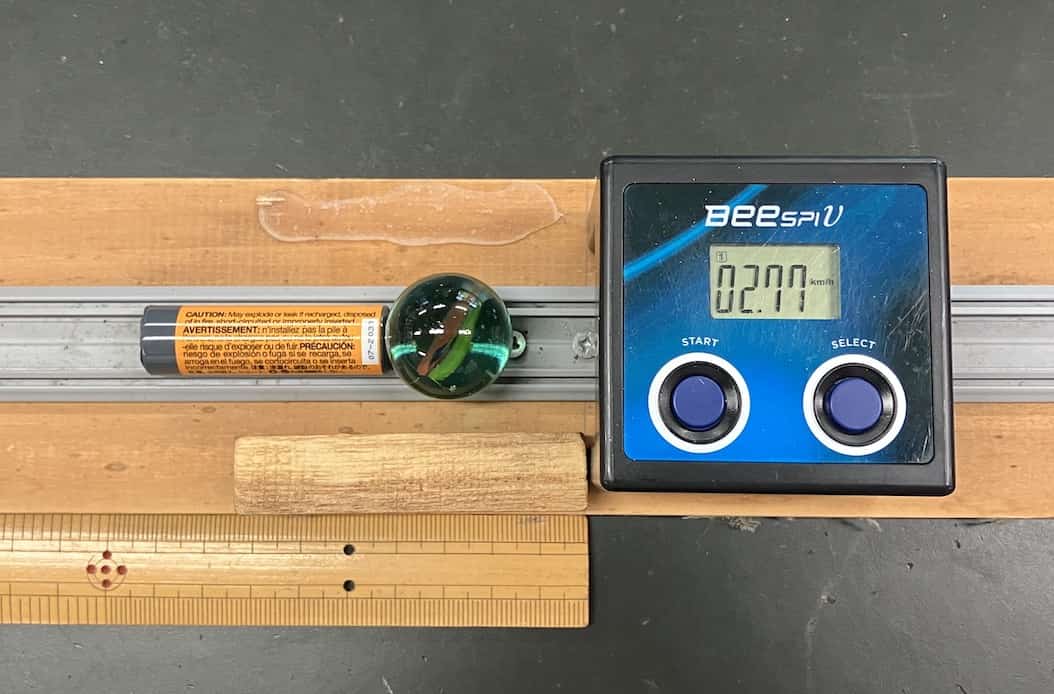
When using larger marbles, you can raise the track with blocks like this to make sure the ball hits the center of the battery.
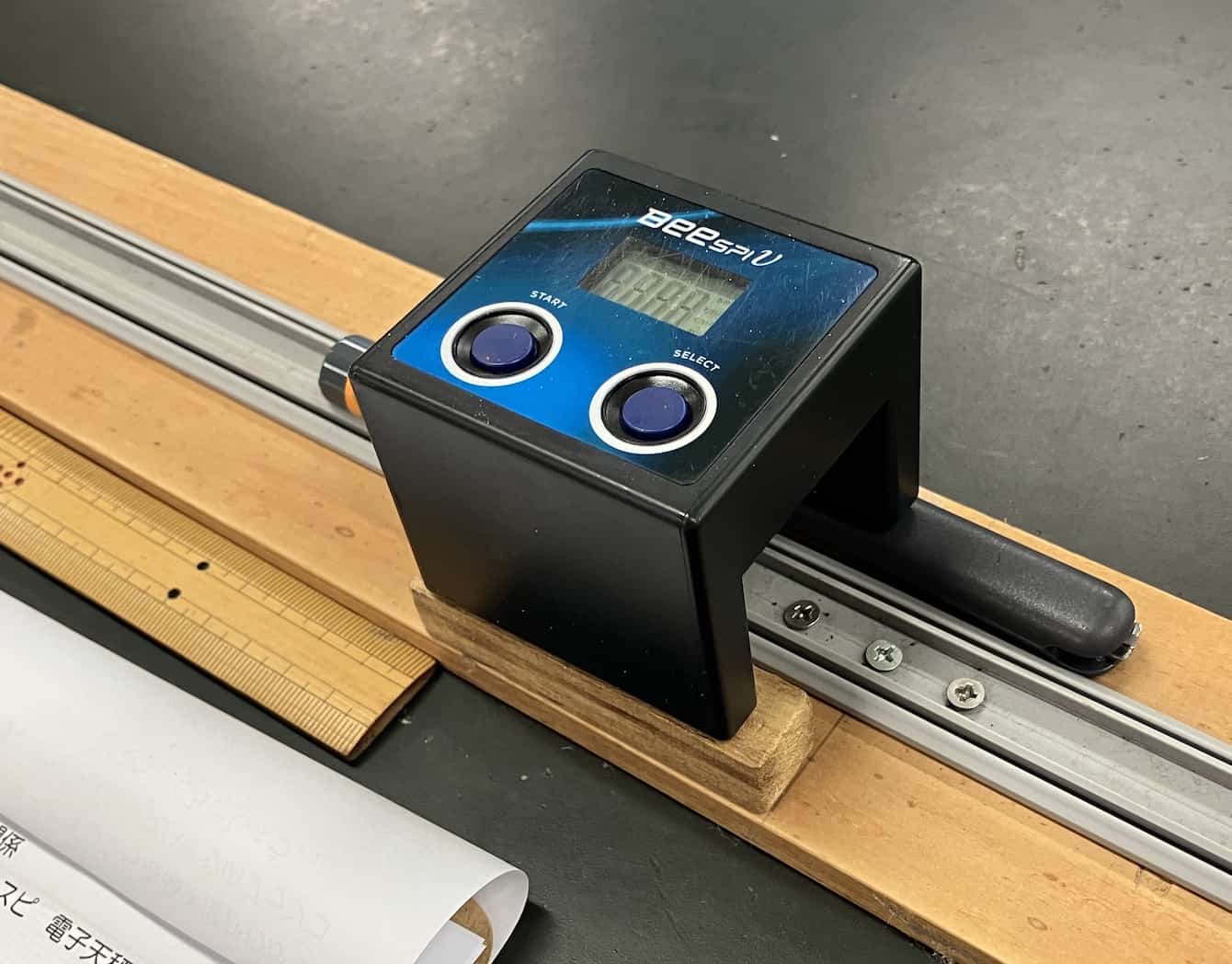
It’s helpful to use a small cup when measuring the ball’s mass to prevent it from rolling away.

Electronic scale and cup
The raw data collected during the experiment is available here. Feel free to use it for your own analysis!
Kinetic Energy and Work Experiment Data (Excel)
Uncovering the Secret Hidden in the Graph: Speed vs. Work
Simply looking at the data collected in the experiment isn’t enough—the real scientific exploration starts now! Let’s plot a graph with the “distance the battery moved (the amount of work)” on the vertical axis and the “ball’s speed” on the horizontal axis.
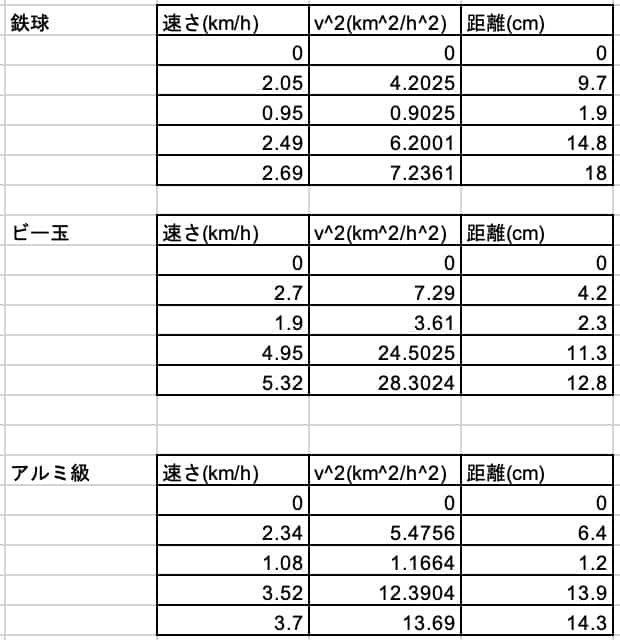
This is the data actually collected by the students. You can feel how hard they worked!

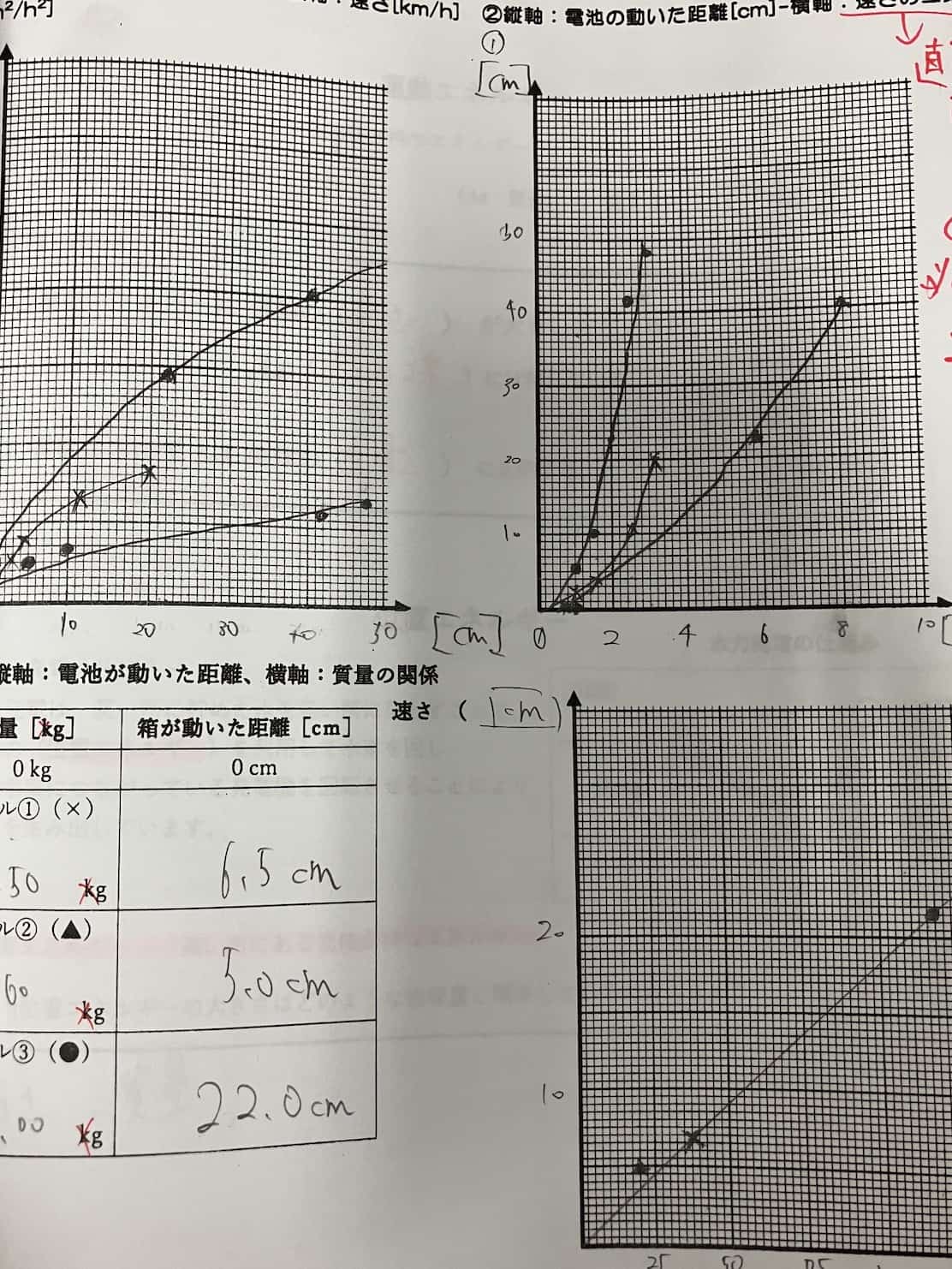
Student Graph Example
As you plot the data, can you see a beautiful, parabolic curve starting to emerge?
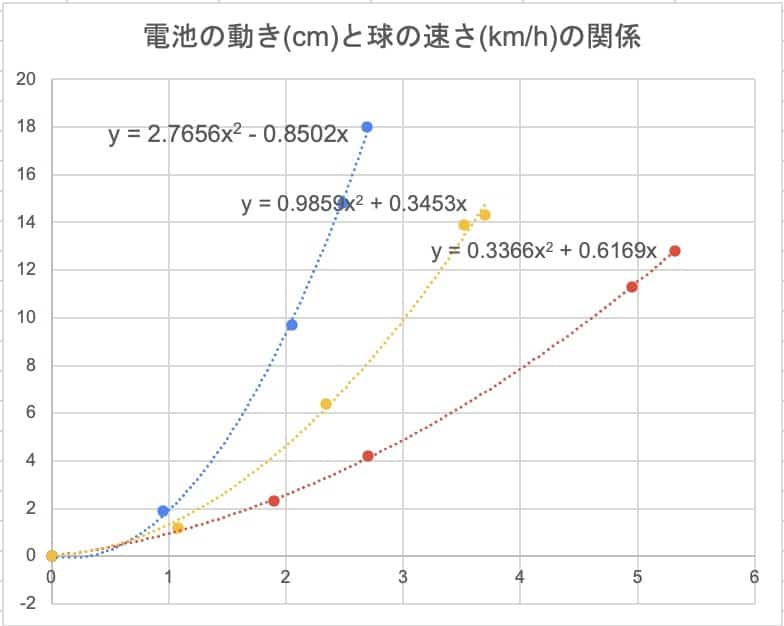
This curve might look complicated at first, but a little “magic” reveals its true nature. The magic is to change the horizontal axis from simply “speed” to the “square of the speed (speed×speed)”!
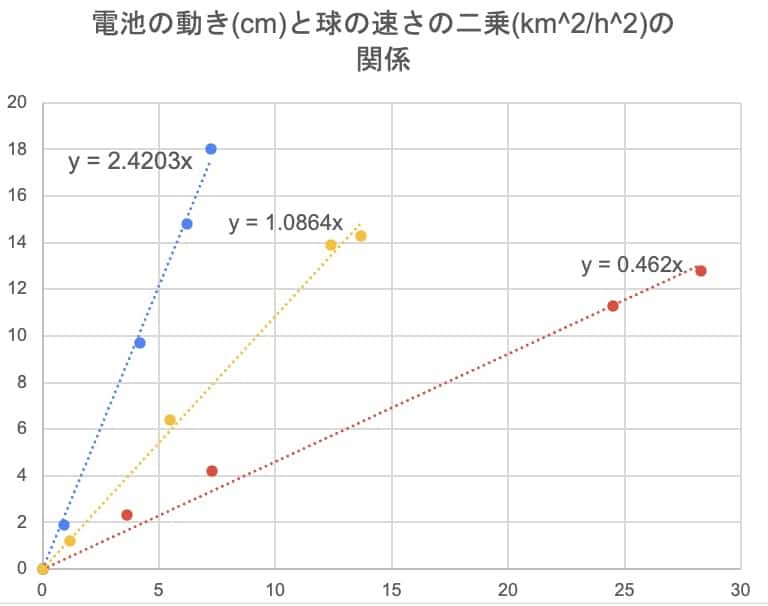
Look at that! The curve we just saw has miraculously turned into a beautiful straight line! This shows that the distance the battery moved (work) is directly proportional to the square of the ball’s speed. This is a surprising relationship: if the speed doubles, the work done quadruples (multiplies by 2
2
=4); if the speed triples, the work multiplies by 3
2
=9. You can really see the tremendous power that speed holds.
Is Weight Also a Source of Power? Mass vs. Work
We’ve cracked the secret of speed. But how does the ball’s “mass (weight)” affect the result? Logic tells us that a light glass marble and a heavy steel ball should move the battery different distances, even at the same speed. Let’s use the data from the previous graph and plot the distance the battery moved for a specific speed, say “2 m/s”, against the ball’s mass.

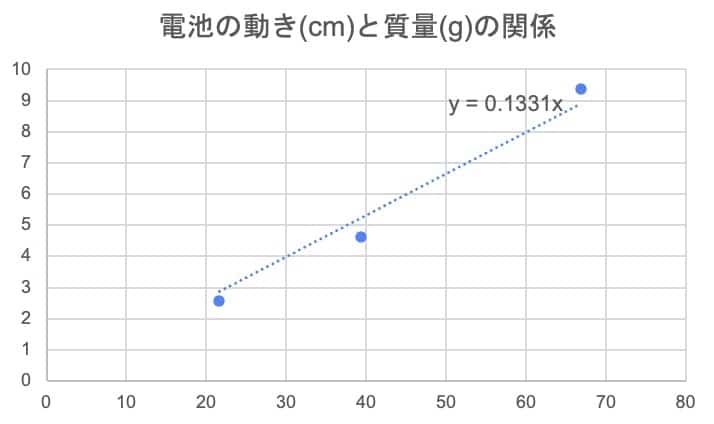
This time, we see another clean straight-line relationship! This means the amount of work is directly proportional to the object’s mass. Our intuition that heavier balls are more powerful has been perfectly proven.
The True Identity of Energy Revealed by the Experiment!
Now, let’s put our two discoveries together!
1. Work is proportional to the “square of the object’s speed.”
2. Work is proportional to the object’s “mass.”
These two findings lead us to a profoundly important law of physics: “The kinetic energy of an object is proportional to its mass and the square of its speed.” This is the very essence of the famous formula for kinetic energy!
![]()
If you’re wondering, “Where does the
2
1
come from?” you’re sharp! That coefficient of
2
1
is actually derived from more advanced calculations. In a real-world experiment, we have various energy losses (such as friction, air resistance, and energy conversion to sound and heat during the collision), so the results won’t perfectly match the mathematical formula. However, through this experiment, you’ve been able to feel the fundamental principle that energy is determined by mass and the square of the speed.
Instead of just memorizing a formula from a textbook, discovering the laws of nature by actually working with your hands—that’s the real joy of science!
Below are photos from other experiments the students conducted. Here, they investigated the relationship between “potential energy” and work by changing the height from which the ball was rolled. They made many interesting discoveries there, too!
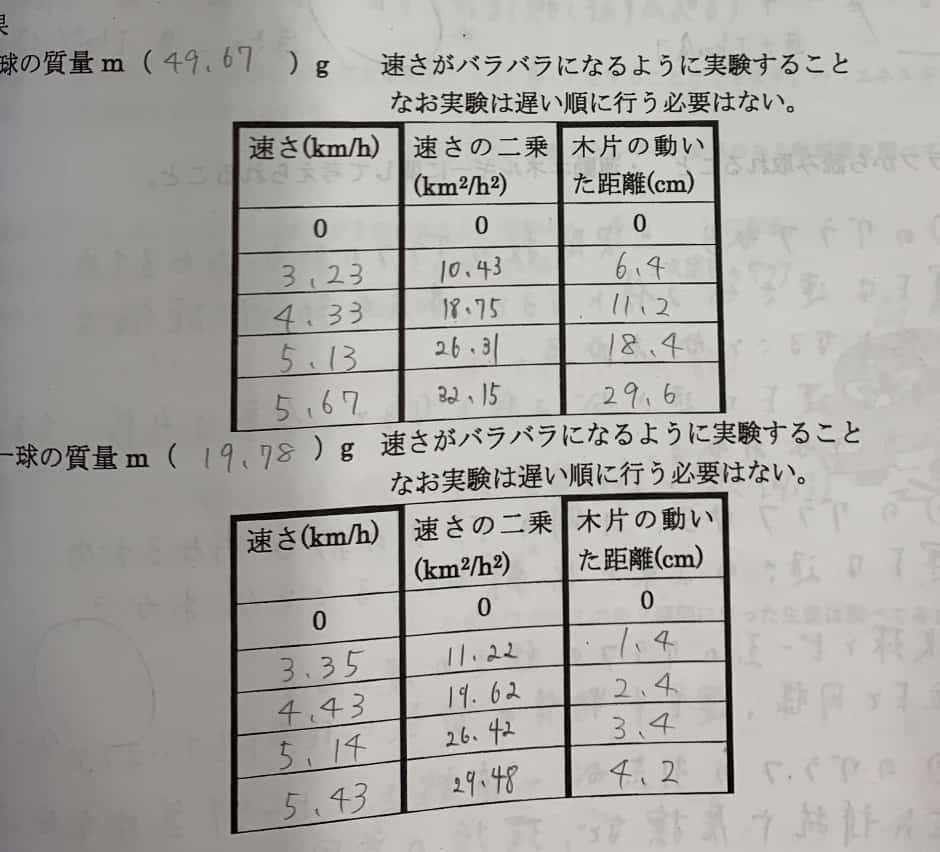
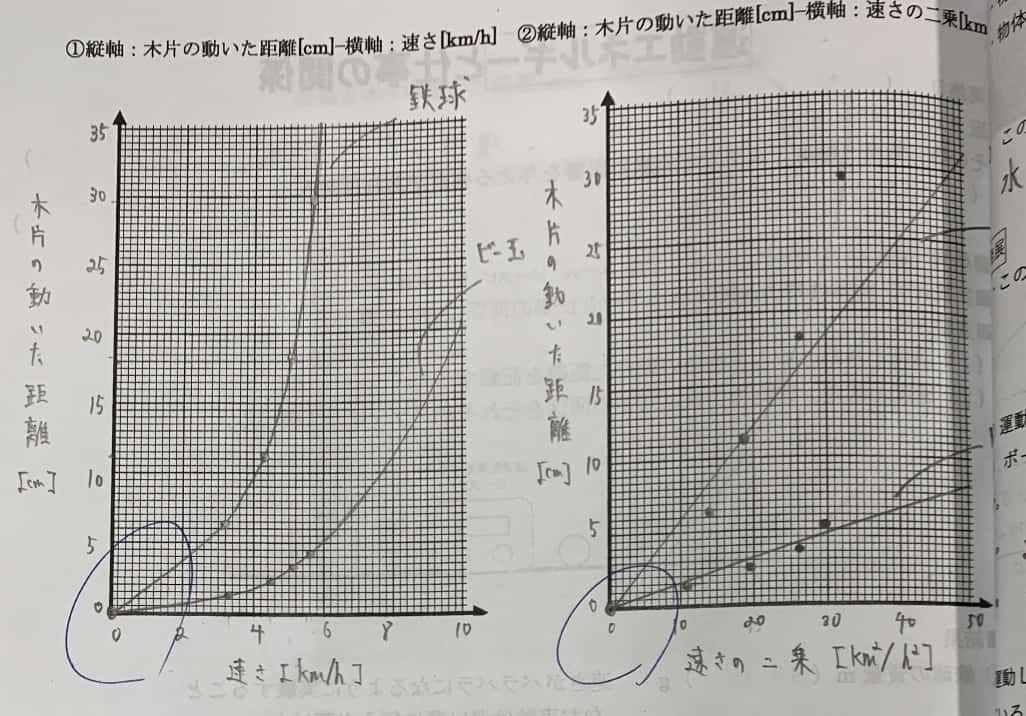
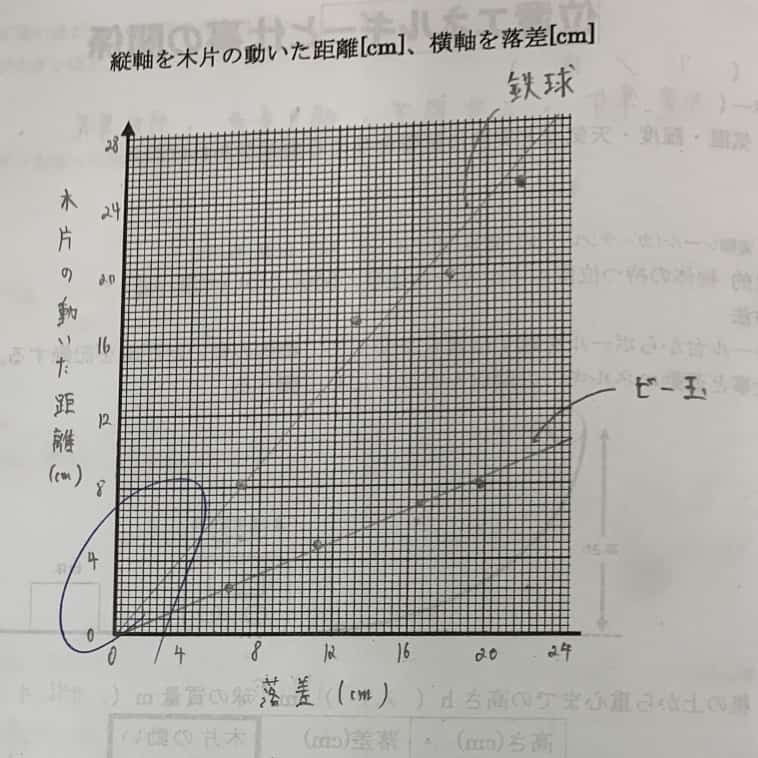
Related articles
Contact and Requests
Bring the wonders and fun of science closer to you! I’ve put together easy-to-understand tips and fun science experiments you can do at home. Feel free to search around!
・About the administrator, Ken Kuwako: click here
・For various requests (writing, lectures, experiment classes, TV supervision, appearances, etc.): click here
・Article updates are posted on X!
![]() The Science Topics Channel is streaming experiment videos!
The Science Topics Channel is streaming experiment videos!


